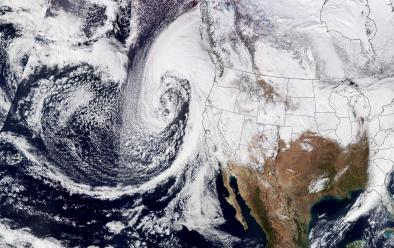The Shifting Scales of Western U.S. Landfalling Atmospheric Rivers Under Climate Change
Study key findings & significance
- Anthropogenic climate change has and continues to alter these storms, which has a cascade of societally relevant impacts.
- Modeling suggests that climate change will result in higher precipitation totals due to a significant increase in AR (+260%) rather than non-AR (+7%) precipitation, largely through increases in the most intense category of AR events and a decrease in the interval between landfalling ARs.
- End-century ARs primarily shift from being “mostly or primarily beneficial” to “mostly or primarily hazardous” with a concomitant sharpening and intensification of winter season precipitation totals.
Abstract
Atmospheric rivers (ARs) can be a boon and bane to water resource managers as they have the ability to replenish water reserves, but they can also generate million-to-billion-dollar flood damages. To investigate how anthropogenic climate change may influence AR characteristics in the coastal western United States by end century, we employ a suite of novel tools such as variable resolution in the Community Earth System Model (VR-CESM), the TempestExtremes AR detection algorithm, and the Ralph, Rutz, et al. (2019, https://doi.org/10.1175/BAMS-D-18-0023.1) AR category scale. We show that end-century ARs primarily shift from being “mostly or primarily beneficial” to “mostly or primarily hazardous” with a concomitant sharpening and intensification of winter season precipitation totals. Changes in precipitation totals are due to a significant increase in AR (+260%) rather than non-AR (+7%) precipitation, largely through increases in the most intense category of AR events and a decrease in the interval between landfalling ARs.
Related Content



